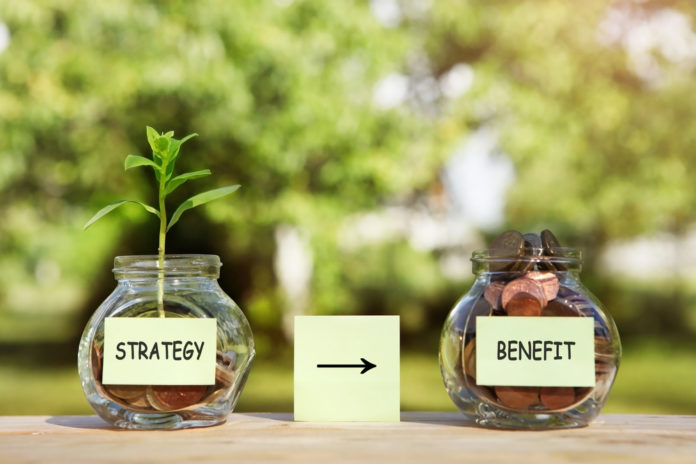
3 ways food and beverage companies are impacting sustainability metrics
By Jamie Feltes, Key Equipment Finance
Corporations eagerly embrace sustainability and sustainable manufacturing processes, which have become integral to corporate strategy for most businesses today.
Consumers and investors feel better about purchasing from and investing in companies that utilize environmentally-responsible measures in bringing their product to market. According to a recent AFLAC study, 55% of consumers believe it’s important for companies to take a stand on key social, environmental, and political issues, and 73% of investors agree that a company’s efforts to help improve society and the environment contribute positively to stockholder investment return.
Circular economy contribution. The Coca-Cola Company recently changed manufacturing processes to help create a circular economy of plastic packaging. The company is switching Sprite bottles from green to clear polyethylene terephthalate (PET) plastic. This move is expected to increase the likelihood of the bottles being recycled into new beverage bottles. Coca-Cola also plans to manufacture DASANI water in 100% recycled plastic bottles, an effort expected to save more than 20 million pounds of plastic vs. 2019, and cut more than 25,000 metric tons of greenhouse gas emissions.
Upcycling food is another growing practice adopted by food and beverage companies seeking to improve sustainability practices. Food waste reduction is a primary goal of consumers, and they prefer to purchase from companies that work to reduce food waste in all aspects of bringing the product to market, according to a study from Innova Market Insights. Consider these examples:
- Del Monte Foods, certified by the Upcycled Food Association, makes versions of its canned green beans with 100% upcycled and sustainably grown green beans.
- Pulp Pantry’s Pulp Chips are made using fiber left over from juicing fruits and vegetables. The pulp of cold-pressed juice contains 95% of the fiber of whole vegetables and is typically discarded or composted.
Energy efficiencies. In addition to upcycling food, Del Monte Foods and Pulp Pantry are conserving energy with their practices. Nestle Purina, one of the top five food and beverage companies in the world, recently upgraded its LED lighting technology as a way to better manage energy use. The upgrade program, supported by efficiency incentives from the National Grid, will increase productivity, create a more sustainable work environment and reduce greenhouse gas emissions by 1,100 tons, roughly equivalent to the annual energy consumption of 114 U.S. homes. Nestle Purina reduced its greenhouse gas emissions by 4.4 million tons in 2021, according to its current sustainability report.
These examples – just a few of the myriad ways food and beverage companies are leading the way in adopting sustainable practices – began with a strategic plan. Companies must consider many factors when developing a sustainability strategy: brand/value, energy efficiency and cost drivers, stakeholder management, risk management, purpose, consumer demands, and funding new business opportunities, just to name a few. For those who manage even some of these functions for an organization, creating a sustainability strategy can seem overwhelming.
When drafting a sustainability strategy, practicality is of the utmost importance. A realistic plan for implementation is as important as the strategy itself. Begin with defining the organization’s sustainability objective. Then identify any potential issues and determine the human and equipment resources needed for success. Which decision-makers and workers will most likely get the job done—and how will they do it? Who will manage the project? How will the work be accomplished? How will you measure and communicate the results, both internally and externally?
Engagement is another important element of a sustainability strategy. Is a top-down approach or grassroots campaign best for your organization? Or perhaps a committed task force? Some organizations have found a variety of approaches successful.
But resiliency is the key to staying the course. Like many organizational strategies, sustainability initiatives require dedication, if not tenacity, to execute and achieve success.
Given today’s business challenges, leaders are overwhelmed with the thought of creating, leading, and managing a sustainability strategy. But when it comes to sustainability, the worst decision is indecision. No action means lost opportunity for collecting data, learning, and increasing opportunities to grow your business through being good stewards of the Earth.
Develop a roadmap to achieving sustainability goals
IBM is a key example of a company that took a strategic sustainability plan from an idea to successful implementation. The company went green to save “Green.” From 1990 through 2020, the company conserved 9.8 million MWh of energy (avoiding 4.6 million metric tons of CO2 emissions) and saved $661 million in the process. Over decades, they have built a tremendous amount of experience by implementing over 1,400+ projects. The byproducts of these projects have helped them address myriad sustainability metrics. Instances like this demonstrate how powerful taking action can be for our Earth and for a company.
Energy efficiency is often at the core of sustainability initiatives for many types of organizations. In fact, large and small organizations set numerous energy efficiency goals to mirror their business operations. Why? Operational initiatives usually offer the most opportunity to positively impact climate goals. While some industries inherently spend more (and thus can save more), all industry types have energy expenses, and the approach is unique to each industry type and company.
Regardless of the approach, studies show that energy efficiency is critical to meeting widely accepted environmental metrics. The food and beverage sector is one of the top fuel and power consumers in U.S. manufacturing. According to the American Council for an Energy-Efficient Economy (ACEEE), companies can incorporate energy efficiency into their strategy by:
- Setting specific energy efficiency or energy intensity targets that are consistent with broader sustainability goals, including science-based GHG targets. Company-supported efficiency targets can focus management’s attention, enable access to capital, and help overcome internal barriers;
- Utilizing service providers to identify and pursue efficiency opportunities in buildings and plants, supplier networks, and end-use products where savings can be maximized;
- Setting up ongoing, strategic energy management and energy-management systems to enable continuous savings;
- Reporting on efficiency measures and communicating progress. Transparency and accountability will help keep stakeholders engaged.
A sustainability strategy should also detail a path for acquiring the equipment needed to implement that plan and a thorough analysis of purchasing options, including financing to circumvent a large initial cash investment. A good lender should evaluate details of all financing options and evaluate Return on Investment (ROI). Fixed rates and rate locks are also important considerations, especially in our current environment.
Whether an organization starts with energy efficiency or other priorities, beware the “paralysis by analysis” trap. Take action now to benefit from data and experience. And try to get comfortable with the uncomfortable!
By creating a strategy that addresses the various facets of sustainability, companies create an opportunity to save big, enjoy new revenue streams and engage stakeholders—all while reducing their carbon footprint.
 Jamie Feltes is a vice president and clean energy account manager for Key Equipment Finance, where, for more than a decade, she’s provided comprehensive industry expertise to companies seeking clean energy strategic plans and solutions. She can be reached at [email protected].
Jamie Feltes is a vice president and clean energy account manager for Key Equipment Finance, where, for more than a decade, she’s provided comprehensive industry expertise to companies seeking clean energy strategic plans and solutions. She can be reached at [email protected].








